20 June 2023
Our guide to treating Whitefly with Encarsia Bio-control
Here is our quick guide to using natural pest control (Encarsia) for whitefly control.
Professional growers have used natural pest control for protecting plants under glass from whitefly for many years. Chemical control simply doesn’t work as whitely quickly build resistance to the chemicals used. Exactly the same products used by professionals are available to you – so change to natural pest control now and introduce Encarsia in your greenhouse.
How it works. Whitefly adults fly to the top of the plant and lay eggs on the underside of the leaf. Each whitefly will lay between 200-400 eggs. The eggs are pale yellow and hatch in 7-28 days depending on the temperature – at 21C, the temperature in your greenhouse in the summer it’s seven days!!!!! The eggs hatch releasing a crawler stage which moves a few millimetres and settles down to feed – pictured below). This is the pale green scale stage is always on the underside of the leaf. The scale feeds for few weeks then pupates and another whitefly emerges. Because of the large number of eggs each adult lays and very rapid the life cycle numbers can increase very quickly.
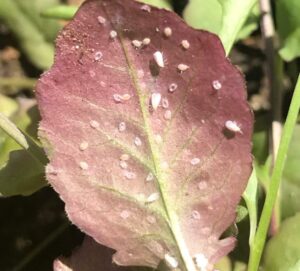
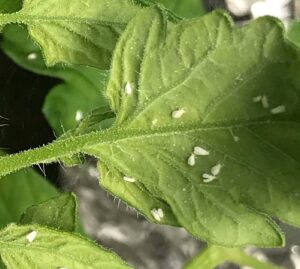
Introduce Encarsia – the bio-control for whitefly – To break this life cycle professional growers, introduce Encarsia. This is a small harmless insect that parasitises the whitefly scale stage, so instead of whitefly numbers increasing the numbers of Encarsia increase, which are tiny and completely safe to you and your plants.
Your quick guide for using Encarsia– the safe, effective, natural control for whitefly under glass :-
- Glue traps – It is important to start using Encarsia as soon as the pest is spotted, so positioning yellow sticky Glue Traps hung close to plant tips will help monitor whitefly. Every time you look at the plant just tap it and whitefly will fly off and stick to the trap. This gives you a measure of control and more importantly tells you where the whitefly are in your greenhouse, so helping you put Encarsia in the right place.
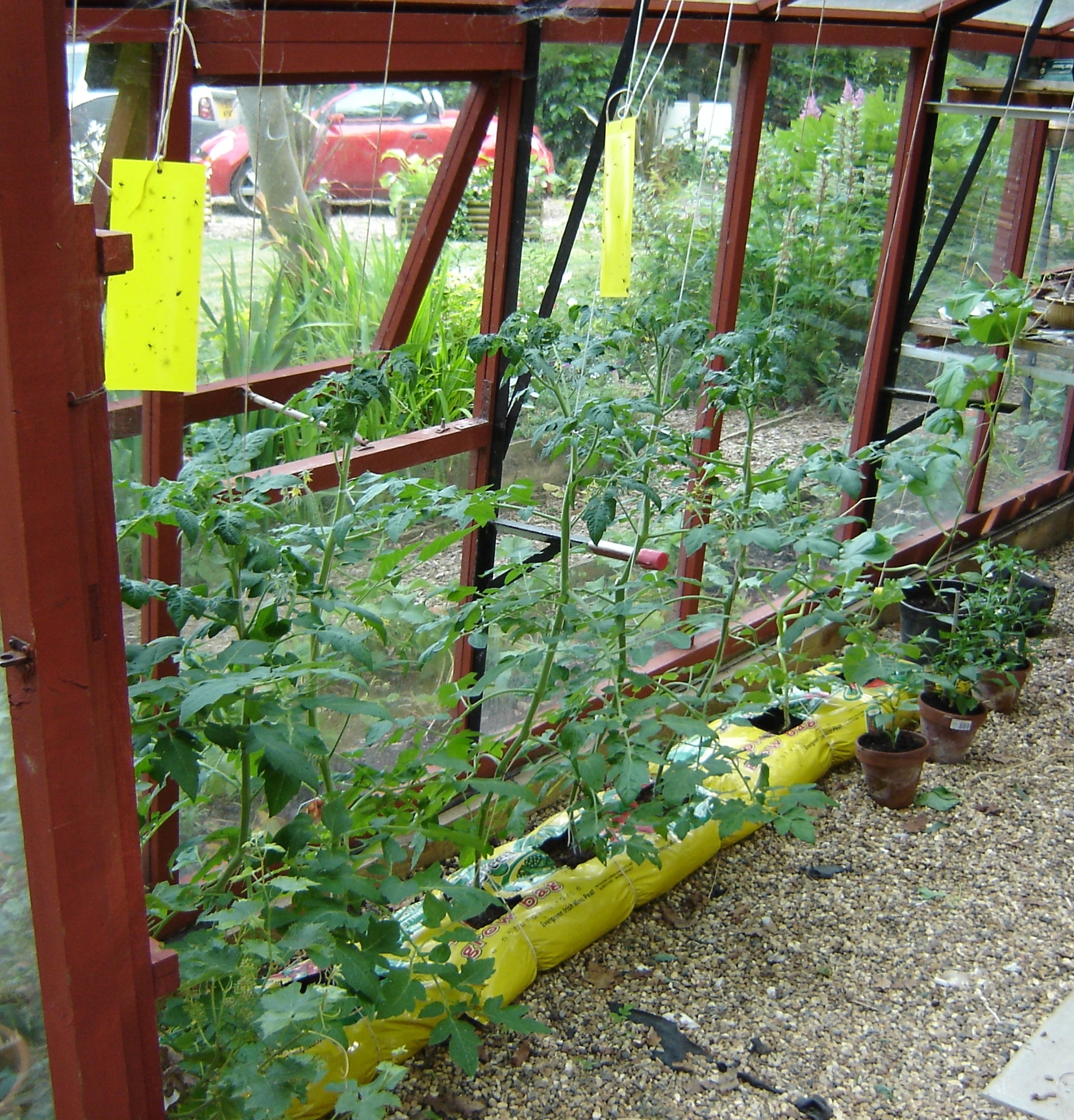
- Identify whitefly – This sounds obvious but people often mistake aphids for whitefly. When you touch a plant and white waxy winged insect fly off that is whitefly. They will always settle on the underside of the leaf. If you find white ‘insects’ on the top of the leaf then the problem is greenfly. These will be attacking shoots further up the plant and as the greenfly grow, they shed their skins, which are white and fall on top of the leaf. Encarsia control whitefly not greenfly. (To control greenfly CLICK HERE).
- Average daytime temps BELOW 10C – Early in the season (March/April) when average temperatures in the greenhouse is less than 10C, control whitefly using Glue Traps and a natural spray called Whitefly Killer. This natural spray will knock down adult whitefly and help to control the scale stage. Spray both the top surface and the underside of the leaf. Try the spray- shake –spray technique. Spray the leaves, shake the plant so adult whitefly head to the top of the plant and then spray again. Using this product will not affect beneficial insects including Encarsia once they are introduced.
- Average daytime temps ABOVE 10c – If whitefly are present even in small numbers and average daytime temperatures are 10C+ introduce Encarsia straight away. These will arrive by 1st class post at weekly intervals as small black dots on white cards. These dots are parasitised whitefly scale. Hang the cards on the leaf stalks straightaway.
- How many Encarsia – For smaller greenhouses with low numbers of whitely use 2 introduction 7 days apart. For larger greenhouses and higher levels of infestation use 4 introductions 7 days apart. Each introduction consists of 5 cards each with over 60 Encarsia per card – over 300 Encarsia! You can never have too many. After a few days the Encarsia will hatch and an adult will emerge ready to inject the pale green whitefly scale with an egg. The pale green scale will turn black and rather than a whitefly emerging, another Encarsia will emerge to continue controlling your whitefly. After introducing Encarsia raise the glue traps 15cms above the plant tips to prevent catching Encarsia. N.B. the black ‘dots’ do not change in appearance.
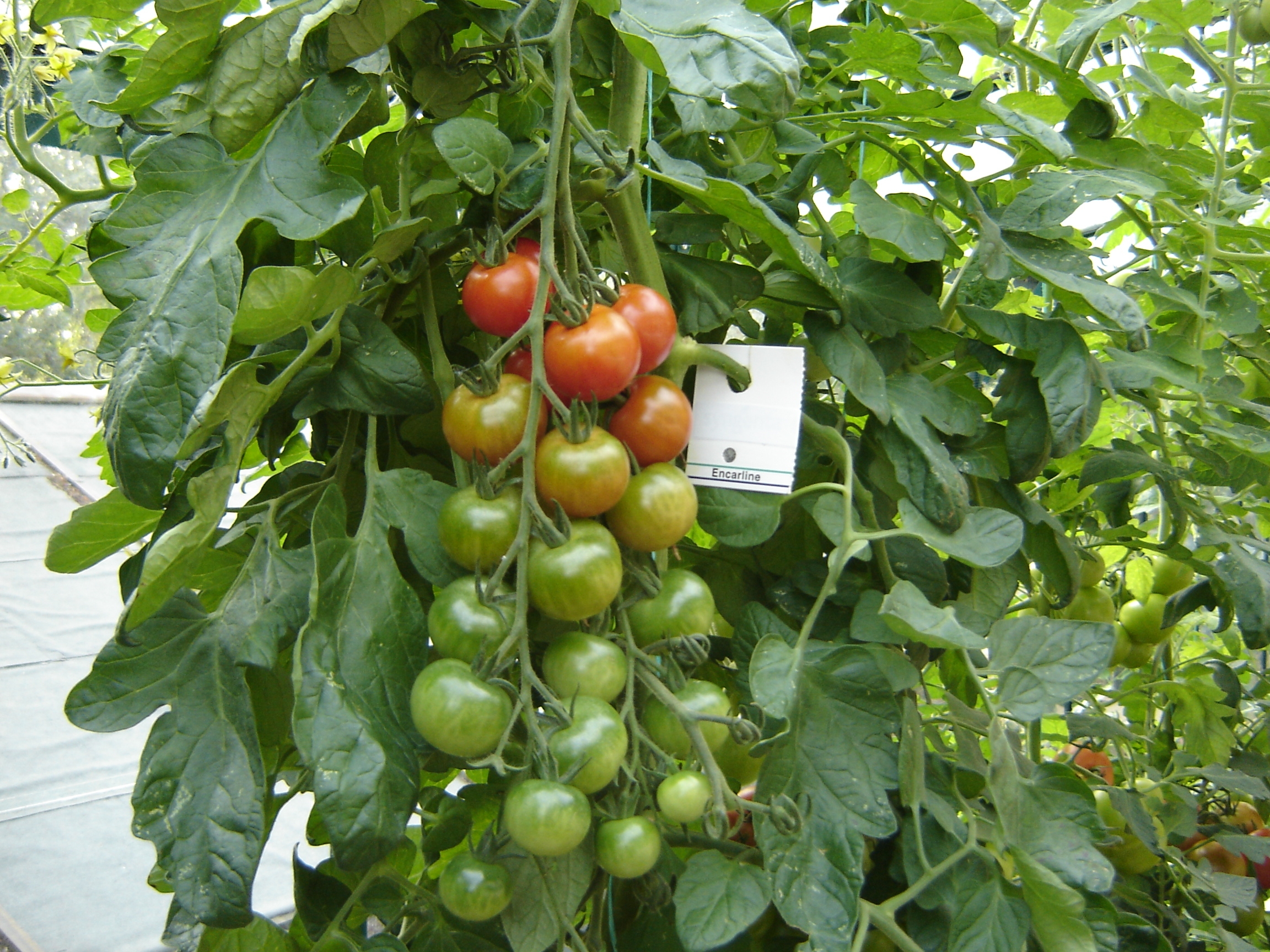
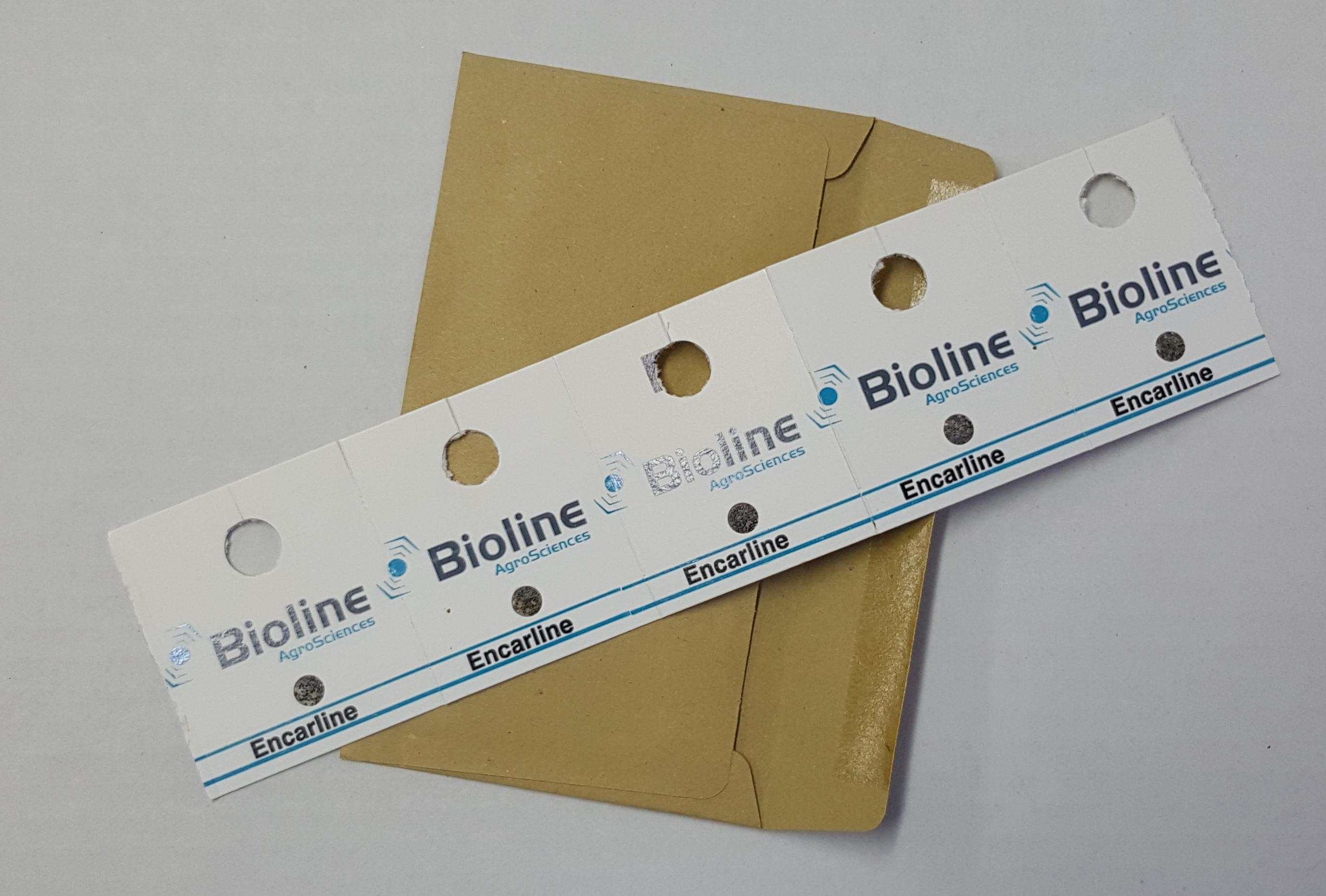
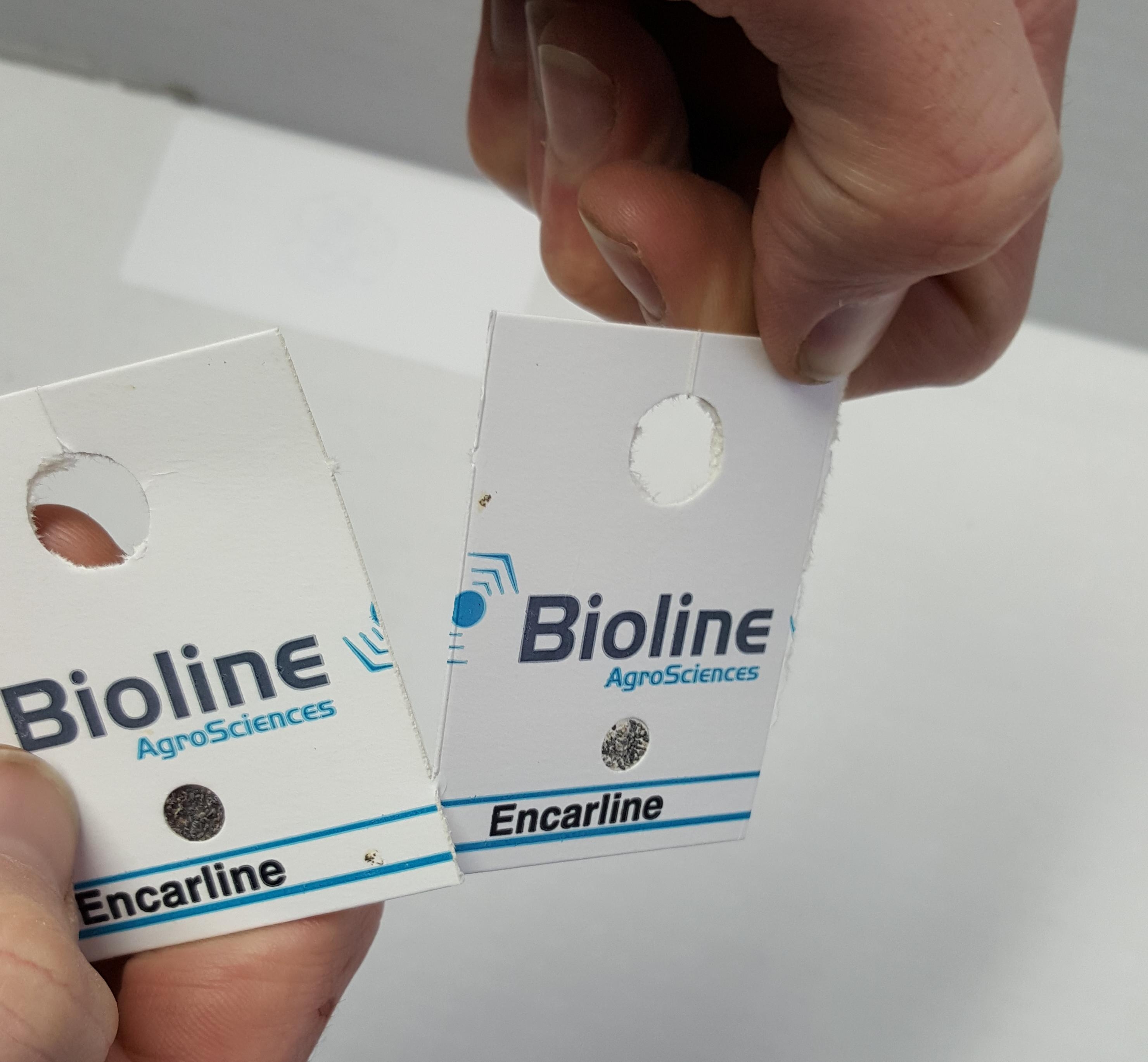
- Whitefly numbers increasing – If you are bit late introducing Encarsia whitefly numbers may increase. Reduce the numbers and allow the Encarsia to catch up, shake the plant and spray the top of the plant where the whitefly settle with Sb Invigorator. Do not spray the underside of the leaves.
- Balance achieved – If you examine your plants and there are a few whitely and on the underside of the leaves there are a few pale green scale plus a number of parasitised black scale you know that a balance has been achieved. Control will continue for the rest of the season. If you keep plants growing through the winter with an average temp of around 10C you may keep the control going from year to year.
Available to buy now
Encarsia for Whitefly in Blister Packs
Control whitefly in your greenhouse / conservatory by introducing Encarsia Formosa AS SOON as the 1st whitefly appear and the…
Hanging Glue Traps
Use these hanging yellow Glue Traps instead of traditional plastic ones to monitor / control whitefly alongside Encarsia. Each trap…
Whitefly Spray Concentrate
This natural Whitefly Spray is based on seaweed extracts and is chemical-free. It controls whitefly by physical means NOT chemical…
Whitefly Spray RTU 750ml
This natural Whitefly Spray is based on seaweed extracts and is chemical-free. It controls whitefly by physical means NOT chemical…
